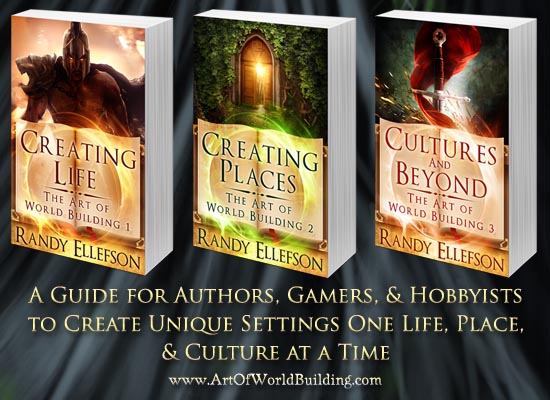One of the fun aspects of fantasy world building is drawing maps. This blog provides some ideas to keep in mind and tools to help. Some of this is kind of obvious but worth mentioning anyway.
Where to Start
A good working unit is the continent. Despite the term “world building”, fantasy authors usually write stories on a single continent. Even if your story will take place in a smaller region, it helps to know what is around it. You can add additional continents later.
Even with a continent as your working unit, you may want to start with a few settlements (villages, towns, or cities) and a forest, river/lake, and a mountain range to go with them. If you start by drawing the entire continent edge, you might later regret it when trying to fill it in with land features that you might not have room for without changes. A good strategy is to draw a single coastline near where you are starting, then work outward and around.
Keep a list of what you want to include, such as a desert, jungle, bays, cliffs, volcanoes, and anything else less common than the standard mountains, rivers, lakes, and forests. You’ll want to make sure you leave a place for them. Nearby islands can be added any time.
When creating a continent, there will always be many more things on it than you can actually draw, whether rivers, forests, or settlements, because it would look too crowded. For example, a map of the United States, which isn’t even a whole continent, is so big that only the largest rivers are shown.
Which Hemisphere is It In?
Is your continent above, below, or overlapping the equator (and by how much)? Or is it directly over the north pole? This will help determine where a jungle, glaciers, swamp or deserts are likely to be, if they exist at all. Obviously a glacier is toward the poles. Jungles are often tropical. A desert can be almost anywhere, really.
This may affect what areas are accessible by ship during winter. If creating sea and land creatures, their typical range will be affected. If you’ve lived in the northern hemisphere all your life but are creating a continent in the southern one, remember that colder areas are south, not north. An expression like “heading south for the winter” would get reversed.
Settlements
Historically, people build near water to have a steady drinking supply, to dispose waste in, and for transporting goods. The biggest cities tend to grow from a particularly useful spot on a river, lake, or by the ocean. You can’t drink ocean water, of course, so such port settlements often have a river emptying into the ocean there, too.
Of course, you don’t have to explain to readers where everyone gets their water from, but if you plop a settlement near a water source but not right next to it, people will wonder why; similarly, the oldest part of your city will be the one next to the water. The size of that water source will also help determine how large a settlement can grow. Lakes and large rivers support more people than a stream. Since you’re drawing major rivers, put cities and towns by them.
Remember that any city will have smaller towns nearby, and the towns will have villages near. You don’t need to draw everything, however. I typically skip villages altogether when drawing a continent-sized map. It’s only for a close-up that I might add them.
Coda
In part 2 we’ll look at some basic geography considerations.
Follow Me
Official Site: http://www.randyellefson.com
Twitter: http://twitter.com/randyellefson
Facebook (as guitarist): https://www.facebook.com/RandyEllefsonGuitarist
FaceBook (as author): www.facebook.com/RandyEllefsonAuthor
YouTube: www.youtube.com/RandyEllefson
Related articles
- World building (andrewknighton.wordpress.com)



and how do you DRAW this map? Photoshop? Powerpoint? Publisher? special program? 🙂
I recommend Campaign Cartographer unless you can actually draw. Powerpoint and Publisher I don’t think would work.
Pingback: Map-Making Pitfalls | M. Q. Allen